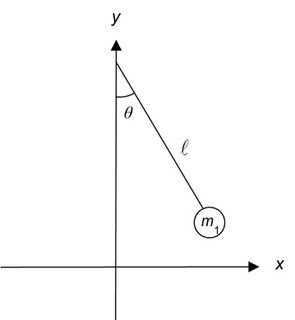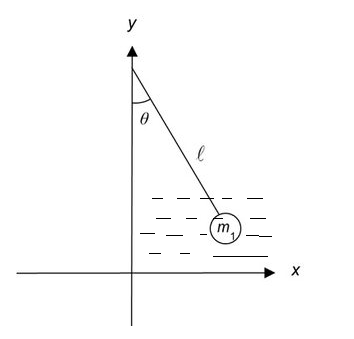Question
Question: The bob of a simple pendulum performs S.H.M. with period ‘T’ in air and with period ‘\[{T_1}\]’ in w...
The bob of a simple pendulum performs S.H.M. with period ‘T’ in air and with period ‘T1’ in water. Relation between ‘T’ and ‘T1’ is (neglect the friction due to water, density of the material of the bob is 89×103kg/m3 , density of water =1g/cc)
(A) T1=3T
(B) T1=2T
(C) T1=T
(D) T1=2T
Solution
Hint Consider two cases of time periods. Calculate the effective g and find its relation with g in air. Since given data is in terms of density the mass is converted in terms of density as well. Then substitute the given data to obtain a relation between the two time periods.
Complete step-by-step solution


T and T1are the time period of the simple pendulum in air and water respectively.
We know that the time period of the pendulum is,
T=2πgl
The length of the pendulum l remains the same in both mediums but g is not the same so we need to consider an effective value
ge forT1
ge is given by the difference between the weight of the bob and the buoyancy force when in water.
ge=mmg−fb
Here,
m is the mass of the bob
g is the acceleration due to gravity
Fb is the buoyancy force= mass of water displaced × g
Mass is written in terms of density ρ using the formula,
ρ=Vm
ge=ρVρVg−ρ1Vg=ρg(ρ−ρ1)
Where,
ρis the density of the material of the bob 89×103kg/m3
ρ1 is the density of water 1g/cc
On substituting the values,
ge=89×103(89×103−1×103)g ge=9g
Since,
T1=2πgel
Now, substitute the value of ge in the above equation, we get,
T1=2πgl9=3(2πgl) ∴T1=3T
Hence, the correct option is A.
Note The pendulum in water displaces some volume so it has to be considered to calculate the time period. Time period is the time taken to complete one oscillation about the mean position. It depends on the medium in which it is oscillating.
